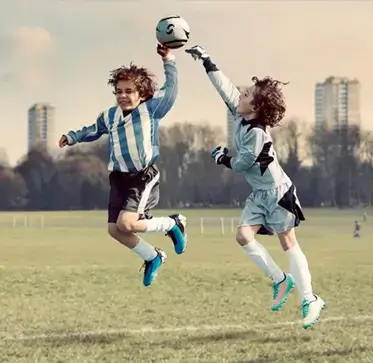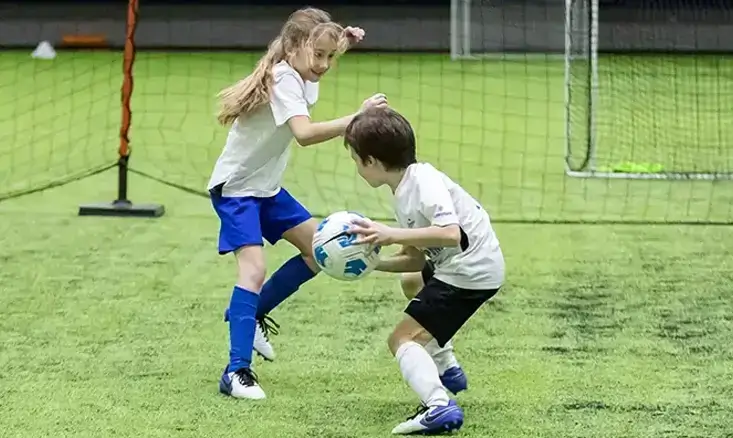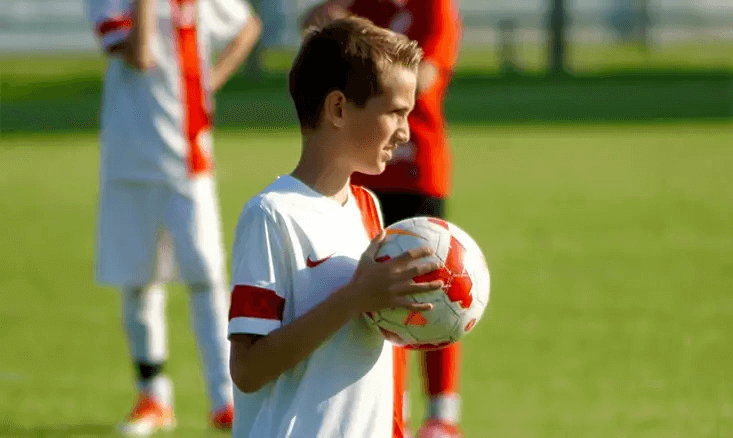Youth Soccer Handball Rules: A Complete Guide

CRFC BLOGS
LATEST BLOGS & NEWSLETTERS
Youth Soccer Handball Rules: A Complete Guide
Understanding the youth soccer handball rules can sometimes be confusing, both for players and coaches. Handball offenses happen when the ball touches a player’s hand or arm, but not all contact is a foul. The key to knowing when a handball is an offense lies in understanding the rules, intent behind the play, and recent changes in the game.
This guide will break down all the important aspects of handball in youth soccer, helping you understand when it leads to a penalty, what the rules are for goalkeepers, and how referees decide whether a handball was intentional or accidental.
What Is Handball in Youth Soccer
In general:
- If the player deliberately uses their hand or arm to touch the ball, it is considered a handball offense.
- If the handball was accidental, it might not be called a foul, especially if it did not change the game’s outcome or affect an important play.
Youth Soccer Handball Rule Changes
Over the years, the rules for handball in youth soccer have evolved. In 2020 and 2021, some important youth soccer handball rule changes were introduced. These changes aimed to make the game fairer and reduce confusion around what constitutes a handball.
One key change is how referees judge whether the ball touched a player’s hand or arm by accident or on purpose. While older rules focused solely on whether the ball touched the hand or arm, newer rules give more importance to whether the player had control of their actions. This means referees consider:
- Was the player’s arm in an unnatural position?
- Did the player move their arm toward the ball?
- Did the handball give the player an unfair advantage?
These youth soccer handball rule changes make it clear that not every handball is a foul. Instead, the referee looks at the context and the player’s intent to decide if it should be penalized.

Direct vs. Indirect Free Kicks for Handball in Youth Soccer
A common question is whether a handball results in a direct or indirect free kick. This is an important part of the youth soccer handball rules, and understanding it can help young players avoid unnecessary penalties.
Direct Free Kick
A direct free kick is given when a handball is intentional. This means the player used their hand or arm deliberately to stop or control the ball. For example:
- If a player moves their arm toward the ball to block it or change its direction, the referee will call for a direct free kick.
- If the handball happens inside the penalty box, the opposing team gets a youth soccer handball penalty kick, which is a serious opportunity for them to score.
In youth soccer, referees take special care to judge if the handball was intentional before giving a direct free kick.
Indirect Free Kick
An indirect free kick is awarded for accidental or minor handball offenses. For instance:
- If a player’s hand or arm is in a natural position, and the ball strikes it accidentally without giving the player an advantage, the referee might call for an indirect free kick.
- The same goes for situations where the ball touches a player’s arm unintentionally and doesn’t interfere with the game.
For younger players, referees are often more lenient and award indirect free kicks to keep the game moving smoothly and ensure learning happens.
Handball Incidents in the Penalty Box
When a handball occurs in the penalty box, it often leads to a youth soccer handball penalty, which allows the opposing team to take a shot from the penalty spot. This can be a huge advantage for the attacking team since they have a high chance of scoring.
However, referees must be cautious when deciding to award a penalty for a handball in the box. They look for the same factors mentioned earlier:
- Was the handball intentional or accidental?
- Did the player’s hand or arm move toward the ball?
- Was the player trying to block the ball deliberately?
If the answer to these questions is yes, then the referee will award a penalty. However, if the handball was clearly accidental, referees may decide not to call a penalty, especially for younger players.
Unintentional Handball in the Penalty Box
The unintentional handball in the penalty box is one of the most controversial aspects of the game. Even though it might seem unfair for an unintentional handball to result in a penalty kick, some situations call for it. For instance:
- If the handball stops a clear goal-scoring opportunity, even if it was accidental, the referee might still award a penalty.
- However, in most cases, if the handball didn’t affect the game significantly, referees won’t call for a penalty.
In youth soccer, referees tend to give the benefit of the doubt to young players when it comes to accidental handballs, encouraging learning and development rather than penalizing mistakes.
Youth Soccer Goalie Handball Rules
Goalkeepers have special rules when it comes to handling the ball. According to youth soccer goalie handball rules, goalkeepers are allowed to use their hands within the penalty area. However, once they step outside of the penalty area, they must follow the same rules as other players.
Here are some important things to remember about youth soccer goalie handball rules:
- Inside the penalty box, the goalkeeper can handle the ball freely, but only if it hasn’t been deliberately passed to them by a teammate.
- If a teammate passes the ball to the goalkeeper using their feet, the goalkeeper cannot pick it up with their hands. Doing so will result in an indirect free kick for the opposing team.
- Outside the penalty area, the goalkeeper is not allowed to handle the ball at all. If they do, the referee will award a free kick to the opposing team.
These rules are designed to make sure the goalkeeper doesn’t gain an unfair advantage and to encourage outfield players to work together to keep the ball in play.

How to Avoid Handball Offenses in Youth Soccer
-
Keep Arms in Natural Positions
Players should always try to keep their arms in a natural position, close to their bodies. If their arms are outstretched, they are more likely to commit an accidental handball.
-
Stay Aware of Hand Movements
Awareness is key in soccer. Players should be mindful of where their hands and arms are, especially when defending or trying to block a shot.
-
Understand the Rules
It’s important for players to know when a handball will result in a direct or indirect free kick and when a penalty will be awarded. This knowledge can help them avoid fouls and play smarter.
-
Practice Good Defensive Techniques
Coaches can help players improve their defensive skills by teaching them how to block shots and intercept passes without using their hands or arms.
Conclusion
Youth soccer handball rules are designed to keep the game fair and fun for everyone involved. Understanding these rules is essential for young players, coaches, and parents. By focusing on learning, practicing good defensive habits, and understanding youth soccer goalie handball rules, players can enjoy the game while minimizing the risk of handball offenses. With these tips and a clear understanding of the rules, players can develop their skills and make better decisions on the field.
FAQs
What happens if a handball occurs in the penalty box in youth soccer?
If a handball occurs in the penalty box, the referee may award a penalty to the opposing team, especially if the handball was intentional or affected a goal-scoring chance.
Can a goalkeeper handle the ball outside the penalty area?
No, goalkeepers cannot use their hands outside the penalty area. If they do, it results in a free kick for the opposing team.
Are all handballs in youth soccer called fouls?
No, not all handballs are fouls. Referees consider whether the handball was intentional and if it affected the game. Accidental handballs may not be penalized.
What is the difference between a direct and indirect free kick for handball?
A direct free kick is awarded for intentional handball offenses, while an indirect free kick is given for less serious, accidental handball incidents.
What should players do to avoid handball offenses in youth soccer?
Players should keep their arms in natural positions and be aware of their movements during the game to avoid accidental handballs.

Did you find this useful?


